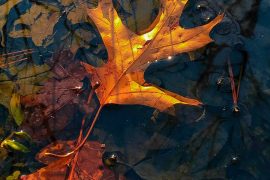The nothing that is not there and the nothing that is
Wallace Stevens is on my mind. Specifically, his thoughts on death, absence, loss, negation, absurdity, and nothingness – but what incites this kind of thinking? I recently read that all philosophy and theology begin with defeat and disappointment. I think this is true. God’s overabundant grace posits a kind of split or ineluctable gap in time and space, rendering in us an endless longing that is both abstract and immediate. We are unable to metabolize the mysterium tremendum. And so we are motivated to create from this emptiness or lack.
In this spirit, there is almost an inevitable re-turn to plain and ordinary things – the thing-ness of a “forlorn particular” – a geyser’s vapor, an over-easy egg, mother Mary’s silent intercessions – maybe means something metaphysical after all?
What Simon Critchley calls “the low, the common, the near” dislodges us from transcendental preoccupations only because they are the proper counterpart to those preoccupations. Can the particular be a totem that reorients us toward our local bodies in their material concreteness? Badiou affirms that Steven’s “Description without Place” is about real being and seeming – the marks on the page exist as pure thing on the page and the non-space or negative space mediate the dialectic or reciprocity of what exists and what is non-existing.
The language of longing, loosely bound together with a “syntax of weakness” registers a lament for loss. We cease our search for higher explanations and turn to the description of the thing- a framed, decontextualized “description without place” and the particularity of our finite inheritance. But also more than description because when we pay attention to what is ordinary, we both profess and confess something about form and meaning and things that matter. When we privilege the plain and mundane, and turn the light toward what is there, a wondrous thing happens: we are reminded of how strange it is to be any-thing at all…





